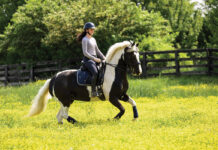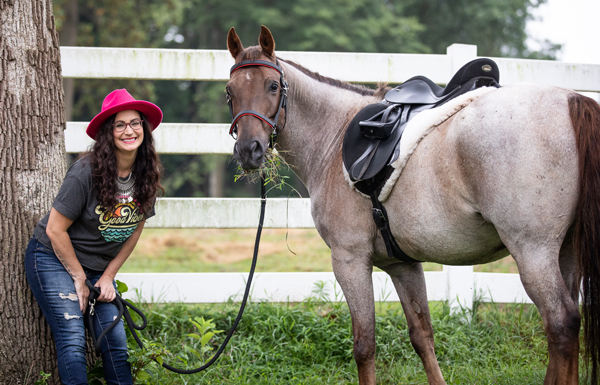
I pride myself on giving my pony the best of everything: a relaxed barn with ample turnout, regular bodywork, and exercises based on his needs and conditioning. He wants for nothing. As a certified equine sports massage therapist, I believe prevention is the best option for health and wellness. Recently, I completed a Saddlefit 4 Life Equine Ergonomist certification course to supplement my business and help my equine clients. On the first day, I guiltily realized I was crippling my pony. More shockingly, I was also hurting myself due to a poor-fitting saddle.
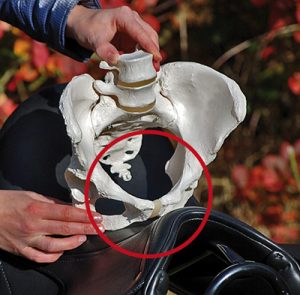 | 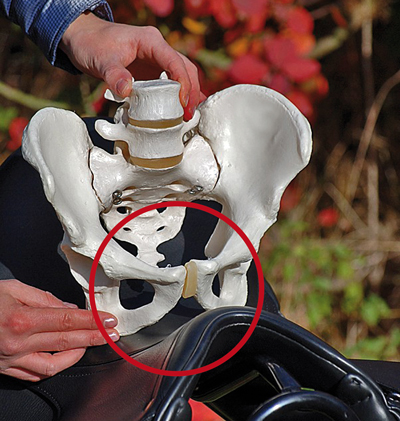 |
| The female pelvis (left) has a lower pubic symphysis than the male pelvis (right). Photo Courtesy Saddlefit 4 Life | |
A Poor-Fitting Saddle Equals Painful Rider
Saddles protect the horse from the rider. Yet, if the rider is unbalanced and tense due to pain, the horse will compensate accordingly. Many of the horses I provide bodywork to have repetitive physical issues that mirror their riders.
If the saddle only fits the horse, but not the rider, does it fit at all?
I am halfway through my externship in the saddle fit certification program, and I can’t count the number of times I’ve heard the following from riders, “I don’t care if it fits me; I just want to make sure it fits my horse.”
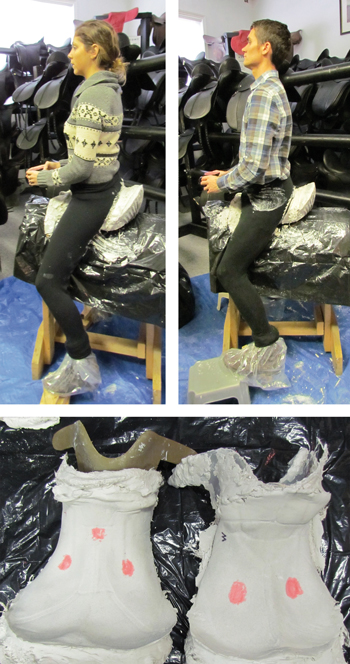
I realized something important. One-hundred percent of my clients are women, and most of us have never felt comfortable in our saddles. Take my own experience, for example. I always thought I was a poor rider, which affected my confidence with horses. After learning about saddle fit evaluations for horse and rider, I realized that my poor-fitting saddle had a short stirrup bar, narrow waist and wide twist. Combined, these effectively placed me in a chair seat with my balance behind my horse with an ineffective leg. I had to lean forward into a fetal position to get my leg underneath me. My trainer would yell, “Shoulders back!” Yet I couldn’t contort myself. My saddle wasn’t right for me, but for all that time, I didn’t know that it didn’t have to feel like that.
German Certified Master Saddler Jochen Schleese says, “You don’t know what you don’t know.”
Does knowing this about my poor-fitting saddle now alleviate my pain or loss of confidence? No, but it gives me hope I can find a proper saddle for me to be more effective and do less damage to my body with the knowledge I’ve gained.
Tips for Proper Saddle Fit for Women
I am learning to evaluate 80 points of saddle fit, some of which are specific to rider gender. One of Schleese’s favorite sayings (in slight variation from Ralph Waldo Emerson) underlines all that I have learned, “The person who knows the ‘how’ will always follow the person who knows the ‘why.'” Female riders should know why they should consider the following saddle traits with their saddles or when purchasing a new one.
◆ Look for a saddle with an extended stirrup bar to accommodate a difference in length between the upper and lower leg to prevent the dreaded “chair seat” and allow you to adjust your stirrup position as needed further forward or back.
◆ The waist (narrow part right in front of the twist), of the saddle is often tall and narrow for men. Women should look for a broader, flatter waist to avoid pain, discomfort, urinary tract infections and kidney infections from constant pressure on your female anatomy.
◆ Find a narrow twist (what the rider feels between their upper inner thighs) to allow your hips to hang straight from the horse’s sides and increase leg contact. Wide twists pull your hips apart and create a “toe-out” position, which can create back pain and even cause long-term damage to your pelvis and lower spine.
◆ Broad, padded seats best support your seat bones and feel a lot more comfortable.
◆ A higher cantle supports your lower back in the correct position for better shock absorption and less trauma to your body and your horse.
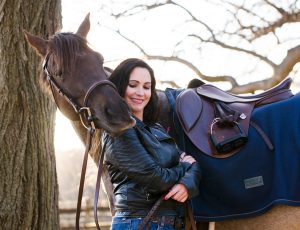
Riders matter too when it comes to proper saddle fit. Our tack should help us be good riders, and yes, even be comfortable. While I look for a new saddle, I am longeing my horse and learning R+ training at liberty. Not only is he fit and healthy, but my pain is gone, and I need less chiropractic adjustments. My goal is to find something that fits both me and my horse—and better yet, can be adjusted as our ages and body conditions change. After all, we want many years of health and happiness together.

